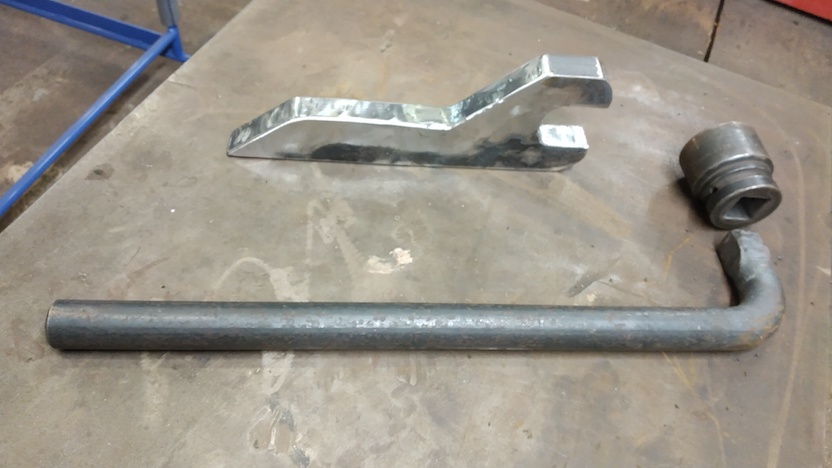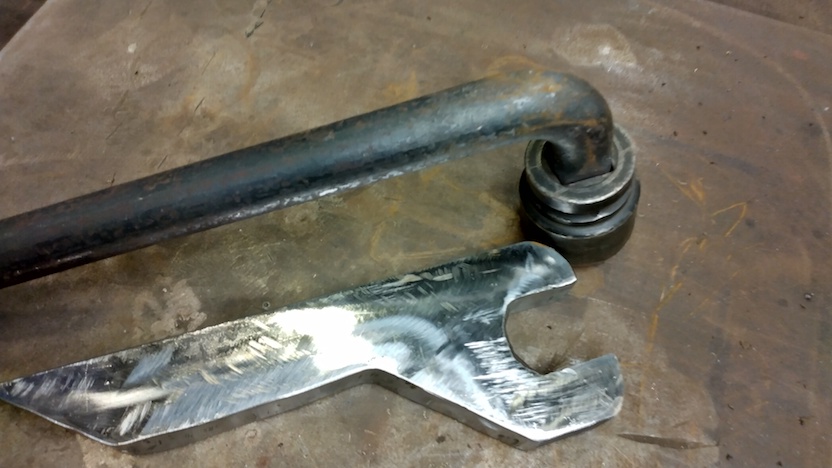
I made the breaker-bar and spanner(s) seen here


The spanners and socket with breaker-bar enabled the job to be done to a good standard easily, with control and low risk.
These tools were borrowed by all teams, which indicates the appraisal of the worth of making the tools for the job.
The nuts and bolts supplied to site-assemble a steel fabrication had a less-usual hexagonal across-flats ("A/F") size.
No regular spanners or sockets fitted.
Trial erection of the steel fabrication would be risky using
adjustable spanners. Which would be completely inadequate for these
high-strength larger bolts needing a lot of torque. Time-consuming
yes, but that would add to operator fatigue, as a part of the high
risk evaluated.
Later erection at site would be even worse.
The main hazard presenting is that, in the confined spaces with
90degree external corners and other projections, if the spanner slips
off the nut under load, the person(s) would "go flying", with high
likelihood of injury.
It is the high likelihood of an adjustable spanner slipping which
presents as the big "no-no".
That a relatively frail adjustable spanner could never achieve the required torque to tighten the bolts would come into view if the risk hadn't dictated "no" first.
No "regular" spanners or sockets would fit them.
"Heads together", the though came - could an old Imperial size be a
coincidental fit?
Long-serving employees rummaged in the far recesses of storage areas
and one mercy was delivered - a 1~5/8ths-inch socket fitted
perfectly. Double blessing - this was a tough one obviously optimised
to work with an impact driver.
For an open-jawed spanner - nothing.
We had a good 1~5/8ths-inch socket which fitted perfectly - but no 1inch-square drive breaker-bar. Breaker-bar given would need to wrench up the nuts to the required torque, which would be high.
Not a problem though - one could be made.
Then we had no spanner - but again, no problem as one could be made.
The oxy-propane cutting torch provided
Outcome as seen.
Given limited space and high torque needed, the spanners made are
"slogging spanners", where torque is applied by hitting the shortish
"handle" with a lump-hammer.
Worked well as the back-up option where the nut was too tightly in a
corner for the socket to fit on it.
The breaker-bar is stubby to enable it it be used quickly in a confined space. But is robust enough to enable an extension tube to be slid over it, enabling the required final torquing-up to be achieved.
(R. Smith, 17Mar2021)